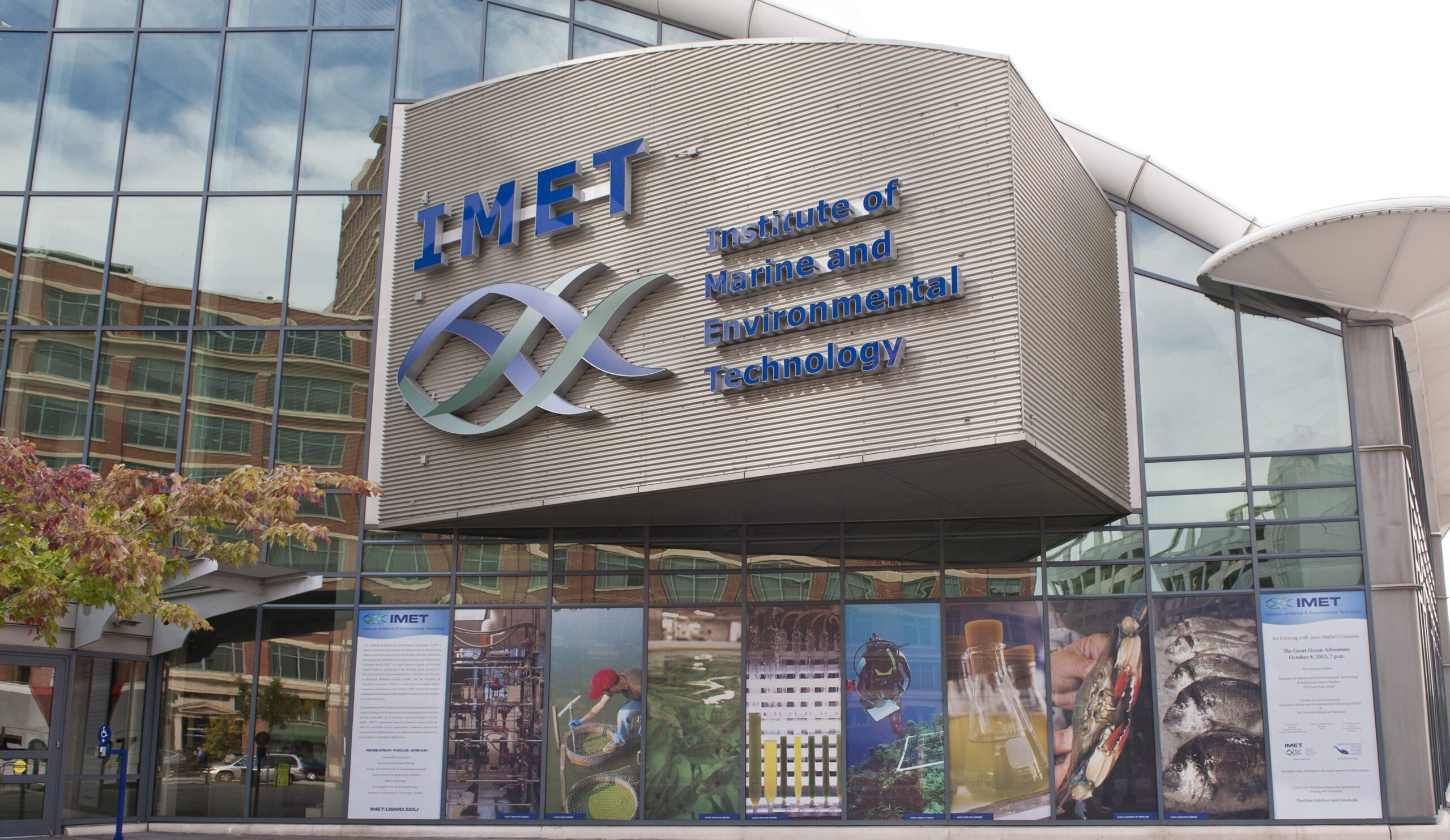Global demand for fish is growing quickly, but many species are already severely overfished, leaving scientists and industry experts searching for ways to more safely and efficiently farm fish. In response, two UMBC research teams are developing revolutionary innovations for off-shore fish farming, to help mitigate the risks of disease and escapes in captive fish populations. Both recently received extremely competitive awards from the U.S. Department of Agriculture (USDA) to pursue their work further.
Yonathan Zohar, professor and chair of marine biotechnology, explains that the teams’ work “makes the point of how you can use advanced approaches and strategies of biotechnology to open some of the major bottlenecks in the aquaculture industry.”
Any time a large number of individuals of any single species is in a confined space—from fish to chicken to trees—disease can spread easily, as all members of the group share the same vulnerabilities. That’s why farmers vaccinate their animals against each species’ most common foes. For rainbow trout and salmon, two of the most popular food species in the United States, one danger is infectious hematopoietic necrosis virus (IHNV).
An effective vaccine to protect fish from IHNV is available, but it must be injected individually into every fish at a cost of $0.30 per dose. That makes its application extremely labor-intensive and expensive. Vikram Vakharia, professor of marine biotechnology, has taken on the task of developing a new oral vaccine for IHNV that can be delivered in fish food, which would drastically reduce labor and costs.
To produce the vaccine, Vakharia infects cabbage looper larvae (a common moth species) with a virus that is genetically engineered to produce the protein that comprises the outer shell of IHNV, surrounding its genetic material. By freeze-drying and grinding up the larvae, sprinkling the powder on fish food pellets, and feeding the augmented food to fish, the protein gets into the fish’s system and triggers immunity to the disease without making them sick. “I’m using insect larvae as a factory” to produce the protein, which serves as a vaccine, Vakharia explains.
A new USDA grant Vakharia has received will enable him to focus on improving the delivery mechanism’s efficiency to ensure all fish in a treated population are protected. “Here is an approach to provide a new generation of vaccines that are edible,” says Zohar. “The possibility of delivering the vaccine through the feed is a major breakthrough.”
Ten-Tsao Wong, assistant professor of marine biotechnology, and Zohar are tackling a different issue facing off-shore fish farms: the risk of escapee fish. Wong’s project doesn’t prevent fish from escaping from their pens, but it renders them sterile, limiting the ecological damage they can do if they ever escape.
Because escaped farmed fish would be unable to mate with wild fish, wild populations would be protected from taking up genetic material from captive fish, which could be detrimental to the wild populations’ survival. This also would prevent captive fish from acting as an invasive species that eventually eradicates native individuals.
Just recently, thousands of non-native Atlantic salmon from a floating net pen farm in the Pacific Northwest escaped, with the potential to out-compete native salmon, causing widespread concern in the fishing industry as well as among scientists and environmentalists. “We want to limit this kind of risk,” Wong says. “Once you have a sterile fish, even if they escape, they’re not able to reproduce.”
In addition, sterile fish “can be more cost-effective,” says Wong. “Because they don’t develop gonads [reproductive organs], they can put more energy into muscle development.” In addition, reproductive hormones can weaken a fish’s immune system, so sterile fish can be more robust in the face of health threats.
Rather than genetically modifying the fish, which would make them a GMO food and alienate some consumers (as well as be illegal in the U.S. aquaculture industry), Wong simply places fish eggs in a bath containing a drug that, at a specific, early window in development, prevents their reproductive organs from growing later on. In an initial trial, Wong’s technique had an 84 percent efficacy rate in salmon. “The technology is working, and the conditions need to be optimized,” he says. “The new funding will help us move forward and enhance the efficiency.”
Vakharia and Wong were selected as the only award recipients in their respective categories in a call for proposals from the USDA this spring, and both projects were supported at maximum funding levels—an expression of the agency’s belief in the importance of the work.
For both projects, “the proof of concept is there,” says Zohar. “Now it’s about optimizing the system so it can be a tool for the industry.”
Image: The Institute of Marine and Environmental Technology on Baltimore’s Inner Harbor, which houses UMBC’s marine biotechnology department. Photo by Marlayna Demond ’11 for UMBC.
Tags: CNMS, MarineBiotech, Research

